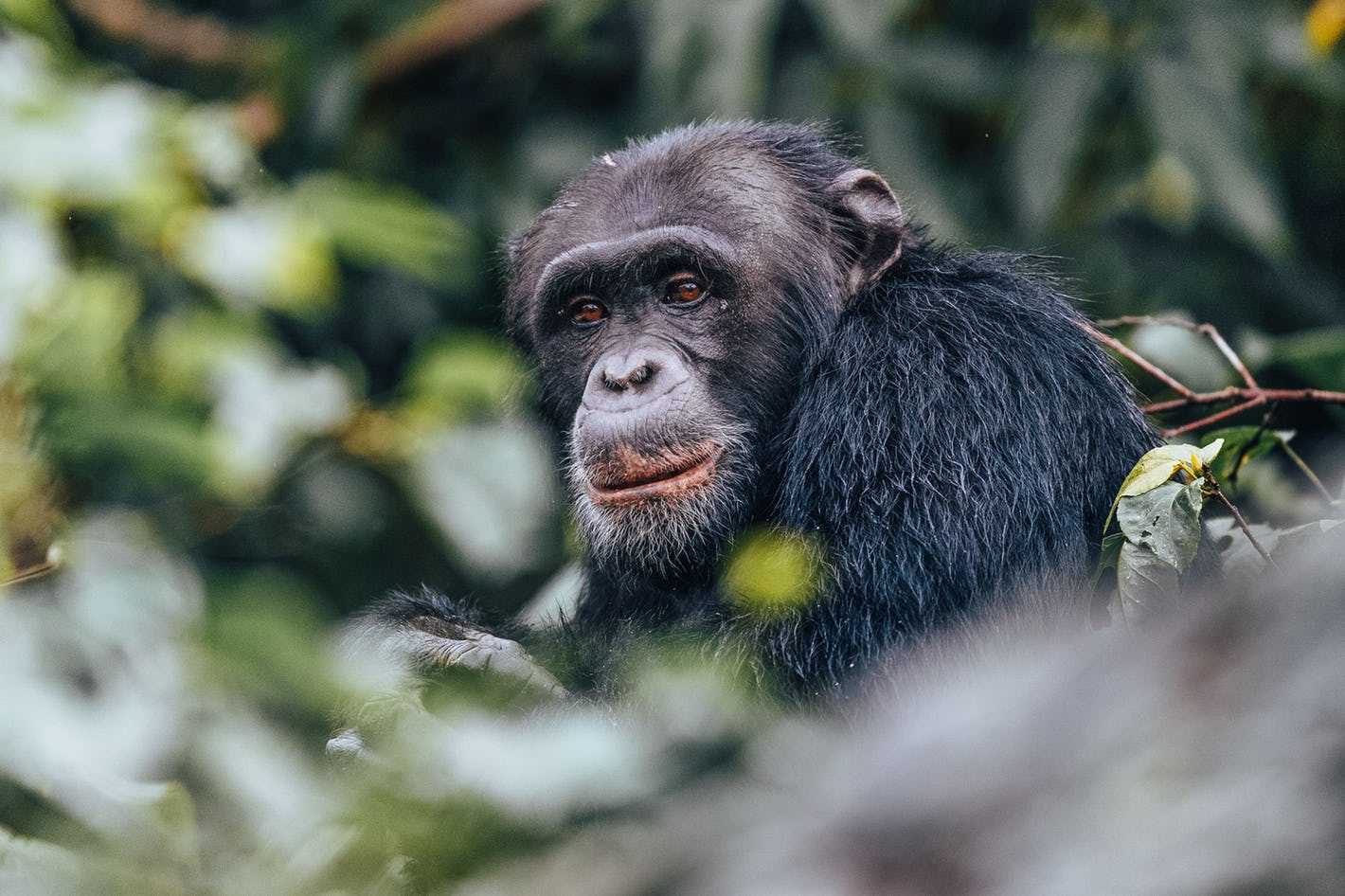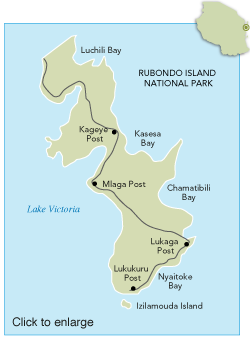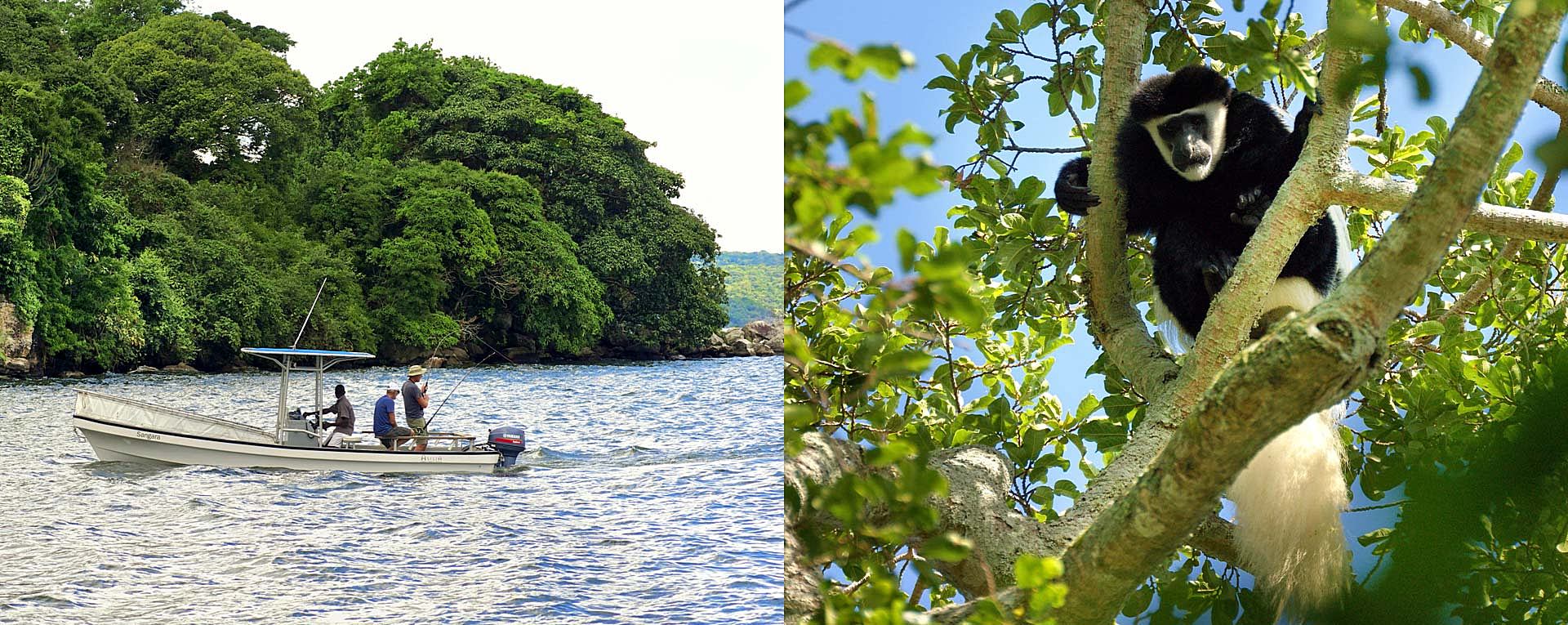Peter Achard
Game Warden, Mwanza on Lake Victoria, Tanzania
Peter Achard - the man behind the Rudondo Island conservation project on Lake Victoria in the 1960s
Peter Achard was instrumental in establishing Rubondo Island in Lake Victoria as an 'ark' for endangered species...long before such ideas (of relocating endangered species) had taken root elsewhere. From 1966 he arranged the transportation of rhino, elephant, giraffe and chimpanzees to the island - most of which have thrived and survived to this day (with the excception of the rhino).
Rubondo Island is the largest island national park in Africa and — bar a handful of park wardens and camp staff — the island is uninhabited and purely a refuge for threatened animals. Over three-quarters of the island is blanketed in pristine evergreen and semideciduous forest that provides a protected habitat for wildlife like sitatunga, elephant, giraffe, chimpanzee and 300 species of birds.
The famed researcher, Director of The Frankfurt Zoolgical Society, and author of The Serengeti Shall Not Die, Bernard Grzimek wrote:
“I had been introduced to Rubondo by Peter Achard, a game warden based in Mwanza at the southern end of Lake Victoria. Achard felt rather forlorn in this corner of Tanzania: ‘All the tourists and VIP’s go to the Ngorongoro Crater and Serengeti,’ he told me. ‘Nobody comes to Mwanza for a look at my part of the world.”
"We boarded a light aircraft and flew the 85 miles to Rubondo. Achard knew what he was doing when he chose Rubondo. I immediately fell in love with the island. It is 24 miles long and on average, 5 miles wide. Three-quarters of its 135 square miles are covered with forest and the remainder consists of grass-covered hills. Above all, Rubondo is uninhabited. So Rubondo now belongs to the animals. Peter Achard had previously captured sixteen rhinos in other threatened areas of Tanzania, most of them badly wounded by poachers or big game hunters. He had talked the Public Works Department, which is responsible for roads and transport, into bringing a car-ferry big enough to hold ten trucks from one of the neighbouring bays of Lake Victoria and transporting the grey giants to Rubondo in their heavy crates. On one occasion the ferry almost sank. Six giraffes made the trip as well, and one of the rhinos has since produced young on the island.”
"Sadly, none of these rhinos remain on the island, having been wiped out by poaching in the subsequent decades, but the giraffes and other animals are thriving to this day. On how the first chimpanzees came to Rubondo, Grzimek wrote: “Peter Achard was an energetic and enthusiastic man, and enthusiasm can be infectious even to aging men like me, who really ought to steer clear of adventuring. As a result, the Frankfurt Zoological Society circularised all European zoos and on May 16th 1966 dispatched ten large chimpanzees from Antwerp aboard the German African Line’s steamship Eibe Oldendorff.”
Courtesy: Asilia Africa
ABOUT RUBONDO ISLAND
Situated on an untouched island in the southwest corner of Lake Victoria (the world's second-largest lake, an inland sea sprawling across Tanzania, Uganda and Kenya), Rubondo Island is an East African hidden treasure, established in 1977. Rubondo Island NP is Africa’s largest island national park covering a protected area of 45 000 hectares, 25 000 of which make up the actual island. The land mass of the park is primarily covered with dense forest, as well as savannah, open woodland, papyrus swamp and beautiful sandy beaches, and, of course, the beauty of Lake Victoria is ever-present while visiting the park. 80% of the island is pristine sub-tropical rain forest, home to the endangered chimpanzee as well as over 200 species of bird.
From elephant and giraffe walking underneath ancient trees, to genet and bushbuck lurking in the shadows, the island hosts it all. Along the waters edge, crocodile bask in the sun and hippo frolic in the water, and Nile perch that reach up to 100kg. The Island is also home to the endemic, illusive and semi-aquatic sitatunga antelope. Other sightings include genet, black and white colobus, otters, giraffe, vervet monkeys, marsh mongoose and suni antelope.
Rubondo is also a paradise for bird-lovers, with nearly 430 species documented on the island. The diversity of habitats, from open woodland to papyrus swamps and evergreen forest, together with its geographical location in the heart of Africa, attracts numerous resident and migrant species. The island has an abundance of butterflies, herons, storks, egrets, ibises, cormorants, kingfishers, flycatchers, bee-eaters, hornbills and birds of prey, including the highest density of fish eagles anywhere in the world.Source: Imagine Travel, Dik Dik Tours and African Mecca Safaris
HISTORY OF RUBONDO ISLAND
Rubondo Island became a game reserve in 1965 and then a national park in 1977. From 1966 to 1969, Professor Bernhard Grzimek of the Frankfurt Zoological Society released 16 chimpanzees in four cohorts onto the island. The chimpanzees were all originally wild-born and of West African descent but had been rescued from various European zoos and circuses. The chimpanzees had spent varying periods, from 3.5 months to 9 years, in captivity before being set free on Rubondo Island. This was the first-ever attempt to rehabilitate captive chimpanzees. The chimps had no rehabilitation or pre-release training but after one year on Rubondo, they were able to find and eat wild foods and construct sleeping nests. The population has now grown to over 60 individuals.
Several other species such as roan antelope, rhino, elephant and giraffe were also introduced on the island. Sadly, the rhino were poached, but today, hundreds of species flourish here; they have adapted to the forest and continue to live in harmony.Asilia Safaris opened a camp on the island on 1 June 2013, Rubondo Island Camp. Their aim has been to structurally improve the prospects for the area, turning Rubondo Island into a profitable and sustainable travel destination. Efforts to habituate the community of 60+ chimpanzee on the island is a long and arduous task, but one that will ultimately ensure a steady stream of visitors who wish to see our closest cousins in their natural habitat. In 2017, for the first time, every guest who visited Rubondo in high season saw the wonderful chimps. With Asilia's help, the chimp population continues to grow stronger, and sightings become more frequent for guests.
Source: Asilia Safaris
ARTICLES OF INTEREST
Africa's Ark by Sue Watt at Wildlife Extra (PDF)
RUBONDO ISLAND: THE AFRICAN ADVENTURES OF BERNHARD GRZIMEK - September 2014


